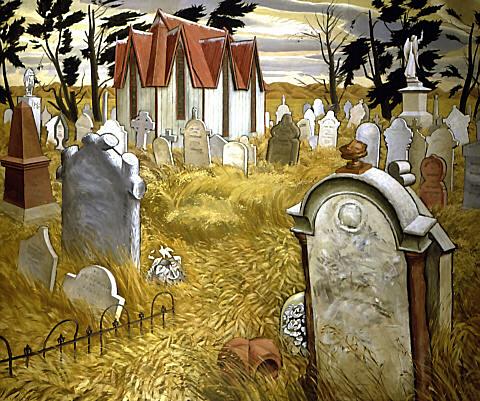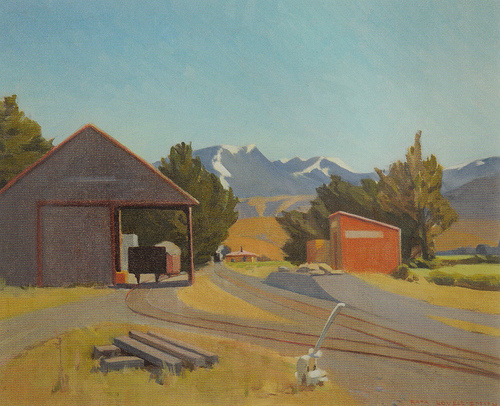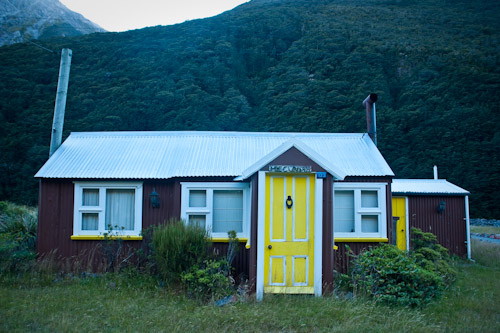|
April 9, 2009
Whilst in Christchurch I visited the Art Gallery to see some of the works that constitute New Zealand Regionalism, which focused on depicting the landscape of Canterbury and Otago in a realist manner. Typically the Regionalists (eg., Rita Angus, and Rata Lovell-Smith) were pre-modernist and opposed to the modernist shift to European abstraction and to American abstract expressionism.
The regionalists depicted the landscape without people, using buildings as the stand-in for the signs of human inhabitation. An example is WA Sutton, a Christchurch-based painter who taught at the very conservative University of Canterbury School of Fine Arts. This art school in the 1950s was resolutely committed to representational painting and encouraged accurate drawing rather than experimentation.
The Canterbury regionalists rejected the romantic traditions of scenic grandeur (including the sublime) and they developed a distinctive imagery focused on marks of settlement and physical features that typified the region.
 WA Sutton, Nor'wester in the Cemetery, oil on canvas, 1950
WA Sutton, Nor'wester in the Cemetery, oil on canvas, 1950
This is seen as an iconic painting of the Canterbury regionalists. Another iconic image is Cass by Rita Angas. These Canterbury School of artists worked with a simplified forms and objects in their compositions, and they were pre-occupied with the clear crisp light 'that transgressed the tradition of the British landscapists.
 Rata Lovell-Smith, Hawkins, oil on canvas, 1933
Rata Lovell-Smith, Hawkins, oil on canvas, 1933
Rata's representation of the Canterbury landscape in paintings such as 'Hawkins' (1933) and 'Bridge, Mt Cook Road' (1934) influenced later artists, including Rita Angus and William Sutton.This regionalism showed an interest in subjects that were characteristic of the localities with which the painters were most familiar. The Canterbury School as a regionalist movement which expressed a growing awareness of a local identity and harboured aspirations for a distinctive New Zealand art.
Today, is the regional difference that stands out in a globalised world and international tourism. My own interest as a photographer after modernism is more the architectural form within the regional landscape:
 Gary Sauer-Thompson, mountain hut, Arthur's Pass, Canterbury, New Zealand, 2009
Gary Sauer-Thompson, mountain hut, Arthur's Pass, Canterbury, New Zealand, 2009
Landscape photography fits easily into this kind of regional realism.
|
